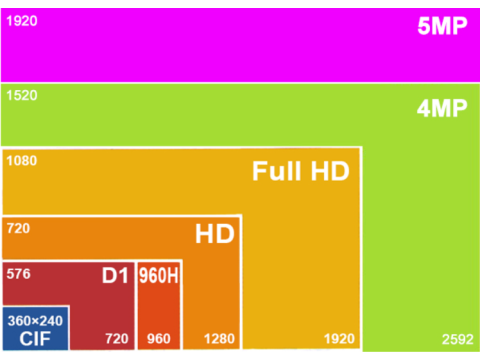Key Factors Influencing Video Surveillance Quality
When assessing the quality of a video surveillance system, several crucial elements come into play. From camera specifications to the supporting equipment, a well-integrated system ensures optimal performance.
Cameras: The Heart of Any Surveillance System
Resolution Standards
The clarity and detail of video footage are largely determined by the resolution of the cameras. Here's a breakdown of common standards:
- 720p (HD): Suitable for basic surveillance needs.
- 1080p (Full HD): Offers clearer detail for more complex scenarios.
- 3 MP and above: Ideal for high-precision monitoring, particularly in IP systems.
Types of Surveillance Systems
- Analog Systems: Once dominant, now less common due to lower image quality.
- AHD (Analog High Definition): Balances affordability and resolution (720p–1080p).
- IP Cameras: Provide superior resolution and network connectivity for advanced setups.
Critical Camera Features
- Low-Light Sensitivity: Essential for nighttime or dimly lit environments.
- On-Screen Display (OSD): Allows precise adjustments for optimal performance.
- Automated Adjustments: Includes white balance, backlight compensation, and signal gain.
A camera’s image sensor plays a pivotal role, with renowned brands like Sony setting benchmarks in performance and reliability.
High-Quality Video Surveillance Systems
Recording and Storage Devices
To maintain overall quality, the specifications of all system components must align:
- Recorders (NVR/DVR): Ensure the recording device matches the camera's resolution capabilities.
- Monitors: Choose displays with appropriate resolutions to avoid underutilizing high-quality footage.
Additional Equipment
The performance of supplementary components also impacts the system:
- Network Switches: For IP-based setups, reliable switches ensure seamless data transmission.
- Signal Transmitters and Cables: High-quality cables minimize signal loss and maintain image integrity.
Avoiding Bottlenecks and Overengineering
Balanced Configurations
- Avoid mismatched specifications between cameras, recorders, and monitors.
- Ensure that all components complement each other for efficient operation.
Proper Installation and Maintenance
- Even the best equipment can fail to deliver if improperly installed or poorly maintained.
Conclusion
Quality video surveillance relies on more than just high-end cameras. A harmonious integration of components—cameras, recorders, displays, and supporting hardware—along with professional installation and maintenance ensures effective monitoring and security.

